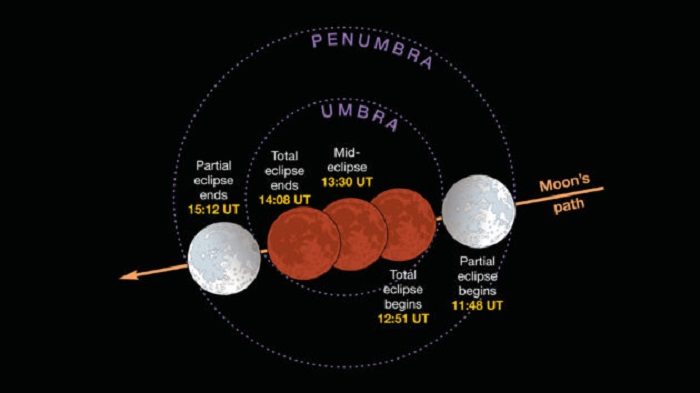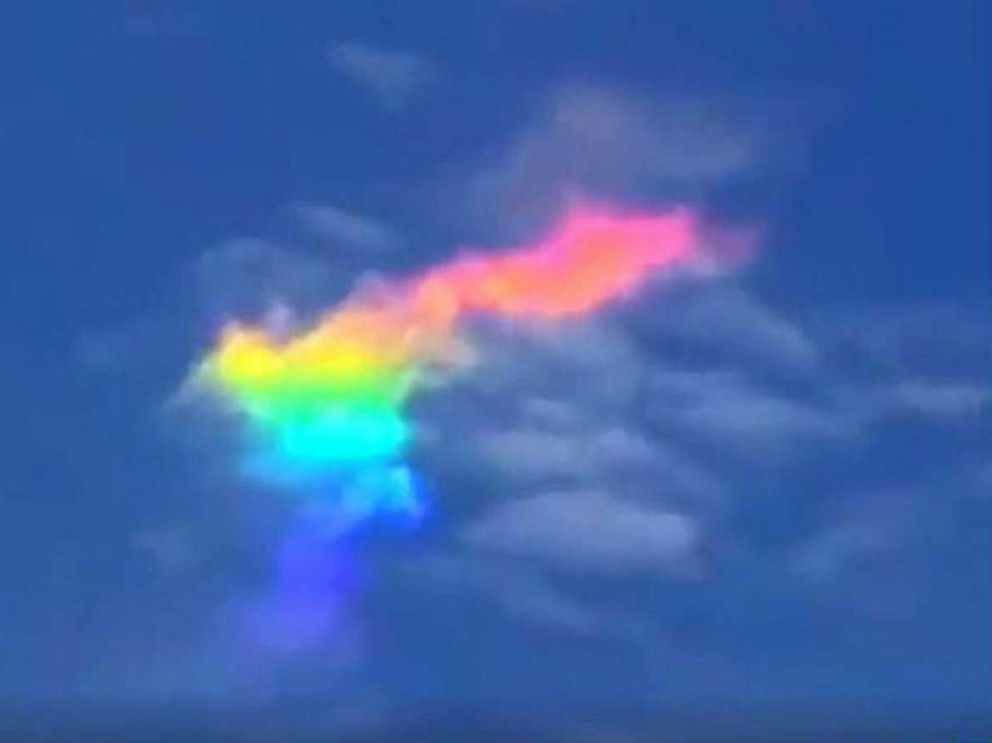
© Sky & TelescopeEvents for the total lunar eclipse on the morning of January 31, 2018. This version is labeled for Universal Time (UT). The event's timing favors western North America, where totality is observable before dawn, and eastern Asia and Australia, where it occurs after sunset.
Given its predawn timing and the vagaries of winter weather, relatively few of us will get to watch the Moon's eerie glide through Earth's shadow on January 31st. And so ordinarily I wouldn't expect the news media to pay much attention to this event this event.
But Wednesday's total lunar eclipse is different. Depending on where you look for news,
headlines are calling it a "super blue blood Moon" or "blue blood super moon" - a sky spectacle not seen in more than 150 years!It's true that January 31st will be a busy day for Luna. First, there is indeed a total lunar eclipse, the first in nearly 2½ years visible anywhere.
As we've noted elsewhere, those living near the West Coast and most everywhere around the Pacific Rim will have the best views. The Moon usually takes on a deep red or coppery color during totality, hence the often-used term "blood Moon" to describe its appearance. Those of us stuck on the East Coast of the U.S. will be challenged to see much of anything as the Moon sinks out of sight in the west as the Sun comes up.
Second, this event falls on the second full Moon of the month, what's often called a "Blue Moon." And, third, the eclipse comes just 27 hours after the Moon reaches
perigee, its closest orbital point to Earth. Lots of you have no doubt heard this extra-close full Moon called a "super-moon."
Yes, it's an astronomical trifecta. But it's not nearly as rare as you might have heard.


Comment: A few days ago spectacular polar stratospheric clouds were captured over Peru. It is likely that atmospheric dust loading from increased comet and volcanic activity is contributing to the 'strange skies' we are witnessing, the cooling effect of which causes ice crystals to form. See also:
- Huge 'alien ship' cloud appears over Maracaibo, Venezuela
- Beautiful iridescent clouds appear over Santiago, Chile
- 'Rare' noctilucent clouds put on sunrise show over Whitley Bay, UK
- Rare atmospheric 'crown flash' phenomenon seen above Moscow, Russia
- What causes iridescent clouds?
- Rare undulatus asperatus clouds form over Dorset, UK
- Spectacular multi-colored 'light pillars' illuminate skies in northern China
- Ball-lightning? 'Strange light' seen over Canberra, Australia
- Weird glowing light spotted over Netherlands: plasma discharge event?
Electric universe theory provides rational, intelligible explanations for such atmospheric phenomena as ball lightning, plasma discharges, noctilucent clouds, lightning, hurricanes and tornadoes. For more information on this and much more read, Earth Changes and the Human-Cosmic Connection by Pierre Lescaudron and Laura Knight-Jadczyk.